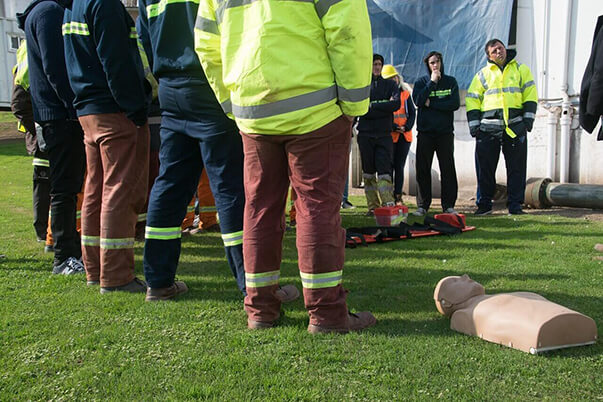Preparedness in any medical emergency is important. It is safe to say that many of us have experienced the feeling of helplessness when someone close to us is lying lifeless. There will be moments that slow down when you want to help but may not know how to. It is better to take an online CPR course now and make a difference when situations require CPR. Learning CPR will help you take the situation under control. This article talks about different situations when CPR is needed. You will also value the need of taking online CPR classes in this article.
Situations to perform CPR
- When someone has breathing problems:
CPR is one of the most important life-saving techniques anyone can learn. CPR needs to be administered for those patients with abnormal or no breathing. If a person goes into cardiac arrest, you might find them breathing for a while. However, if they are gasping for breath, you should start administering CPR immediately. Perform 30 chest compressions with 100-200 compressions every minute. It needs to be followed by two consecutive mouth-to-mouth resuscitations.
- Drowning accident:
CPR needs to be performed immediately when a person is rescued from a drowning accident. It will increase the person’s chances of survival. An individual who is skilled in CPR will know the techniques involved in saving the person’s life. According to the American Heart Association, rescuers will need to deliver two rescue breaths at first, after which they can start with cycles of chest compressions and mouth-to-mouth resuscitation as directed in the CPR guidelines. It is essential to get the patient’s heart pumping again. When using CPR, perform 30 chest compressions with 100-200 compressions per minute, approximately two inches deep, followed by two breaths.
- When someone is unconscious:
There may be many things you may not know about CPR, but there is one thing we would want you to know. Bystander preparedness is crucial if they witness an unconscious individual. If there is an unconscious patient, first, you need to try waking him/her up. If the person is unresponsive, check for the victim’s pulse and see if his/her breathing is normal. As per the American Heart Association and Emergency Cardiovascular Care, if the person is unconscious, you are liable to start CPR. Therefore it is essential to intervene in order to get the patient’s heart pumping again.
- When someone collapses to the floor:
Knowing what CPR is and how to perform it is more critical. Another situation where CPR is needed is if a person suddenly collapses to the ground right in front of you. Do not panic in such scenarios. First, check to see if the patient is breathing and search for a pulse. Call 9-1-1 immediately and let them know if the victim is breathing normally or not. Until help arrives, seat the patient in a recovery position, observe for any signs of change, and ask other bystanders for details. Let’s say, the patient is not breathing. Call 9-1-1 immediately and begin CPR. Perform 30 chest compressions with 100-200 compressions every minute. It needs to be followed by two consecutive mouth-to-mouth resuscitations. Continue administering CPR until the patient regains consciousness or until emergency services arrive.
- When someone gets electrocuted:
In the case of an electrocution accident, make sure not to go close to or touch the victim. Call the emergency services team instead and observe the patient minutely. You can be helpful in such a situation and find the power source and switch it off. Carry the victim to a safe place away from the electrocution site. If the victim shows no signs of breathing, coughing, or movement, emergency CPR needs to be performed to increase the chances of survival.
- Exposure to smoke or drug overdose:
Emergencies often occur right before us; here’s where we need to analyze the scene and prepare ourselves to give CPR. In cases such as exposure to smoke and drug overdose, you need to jump onto the scene immediately and check for the patient’s breathing and pulse. However, if the victim is unconscious, ensure to place them in a safe space in the recovery position. Traumas of this kind might need an individual to provide rescue breathing and chest compressions.

Situations when you do not perform CPR
While you may want to respond by rushing to an accident scene and performing CPR without a moment’s delay, it’s not always advisable. We have listed a few times administering CPR could be harmful.
1. When the patient is breathing normally
2. When something seems suspicious
3. When the situation can put you in grave danger
4. When the emergency medical services arrive
5. In case of a fire or natural calamity
Hands-only CPR Conditions:
Hands-only CPR is more effective than conventional in some cases, like when a person collapses. It is recommended for everyone, including bystanders who do not have knowledge of CPR. Hands-only CPR is CPR without rescue breathing. Hands-only CPR is more effective than conventional in some cases, like when a person collapses. It is recommended for everyone, including bystanders who do not have knowledge of CPR. Hands-only CPR is CPR without rescue breathing.
Conclusion
There is no greater joy in the world than saving the life of someone close to you. If you are CPR certified, you can always step forward and come to someone’s aid. Make some time and enroll for this life-saving course today, and you can use that CPR card with utmost pride when the occasion arises to help someone in need. Benefit from AHCA online courses that allow you to complete the course at your pace. The training will not only provide you with a certification but will also enhance your career. Register on the AHCA website for more details and offers.













